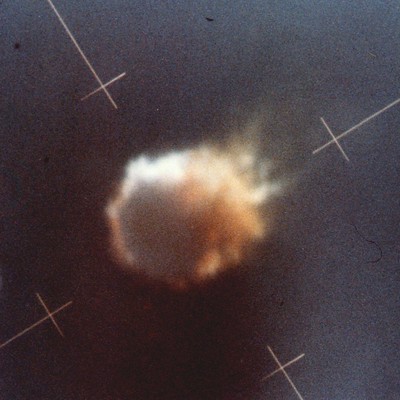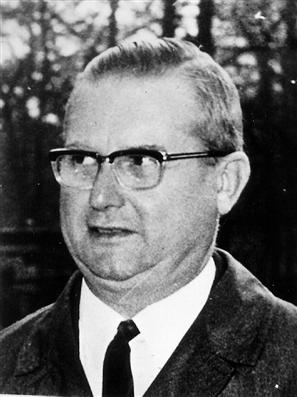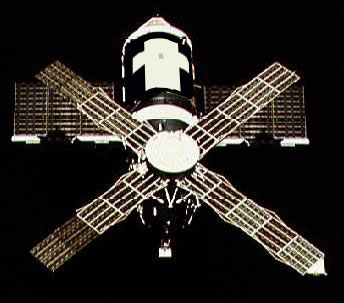Post by michelvan on Mar 19, 2022 17:15:37 GMT
27 - European Space Program 1961-1974
In 1959 as MBRM Blue Streak program was stopped, the British politicians had a problem,
what to do with hardware and engineers working on it?
Building a Satellite launcher was evident, but they had a lack of money, so they looked for partners.
In the Commonwealth organisation only Australia showed interest to cooperate,
but on the European side they found a very interesting partner.
France looked for a Joint Venture in Rocket hardware development, especially for their Military program.
(after February 1961 this french program became a top Priority)
During several meetings in 1961 of the Committee on Space Research, the Europeans came to agreement for a joint-venture in Space.
The European Space Effort was organized similar to CERN and segmented in two units:
The European Space Research Organization (ESRO): Scientific Research of space by probe or satellite.
And European Launcher Development Organization (ELDO): R&D for European common launch rocket.
With both directorates installed in Paris, while ESRO Centers were installed in the Member states,
ELDO was reliant on member state's Aerospace contractors to test their own Hardware.
While ESRO/ELDO was founded in 1961, ELDO became active only in 1964, do to political problems like in Belgium and Italy
In 1962 Belgium had a major political crisis, do the death of U.N. general secretary in Congo,
by mercenaries, on the order of Belgian industrialists who tried to defend their interests in the former Belgian colony Congo.
This delayed the convention on agreement, during this time the European ministers gained control over ELDO.
Founding Members were Britain, France, West Germany, followed in 1964 by Italy, Netherland and Belgium,
while Australia cooperated on ELDO by providing a launch site.
ELDO faced problems with building a rocket out of divergent parts from European space programs
but they had no chance to coordinate the rocket development.
That was already in under the control of the Europeans ministers and the contractors tested their own hardware as they liked.
Hawker Siddeley started the first test launch F1 on 5 June 1964 in Australia,
Followed with the F2 to F4 until 1965 the last one with Dummy upper stages.
but the succeeding test flights of Europa rocket were disasters.
On the political side 1966/67 was hard years, the Government of Harald Wilson threatened ELDO with a British withdrawal,
Then came the French with idea to stop work on the Europa rocket and go for more advance rocket for communications satellite into Geostationary orbit.
In the end Britain reduced their funding to ELDO from 38% to 27%, the other member covered the loses and the French got the Europa-2 rocket.
In the mean time the French start to build there Europa-2 launch center on the coast of French Guiana, South America
In 1969 NASA asked ESRO/ELDO and others for a Joint-venture on Odyssey program,
particularly in the Space Shuttle & Space Tug programs and space probes.
But it was the wrong signal for European ministers, who looked to benefit their own Nation, not in a cooperation under ELDO or ESRO
Allot of studies were made for NASA who expected a different view on there problems,
only to find same solution offers by US companies.
Except two ideas: a German modular science laboratory rack for the Shuttle/Station and
Canada proposal for a robotic manipulator arms for Space tug.
The effort was serious hampers by NASA treaty with several European nation for Odyssey Program bypassing ELDO/ESRO
Meanwhile the Wilson Government again threatened, with terminate production of Blue Streak.
On April 1970 at ESC Meeting they Minsters started the selection of Europa-3, five design were consider:
A - Blue Streak with Upgraded RZ.2 Engines, with second stage a Hydrogen oxygen propellants with two french HM5 engines, additional solid booster two to four french P-16.
B - complete new French/German design with Hypergol propellants, with second stage a Hydrogen oxygen propellants with one MBB High Pressure engine.
C - Italian design using Hardware from Blue Streak, but build in France with 4x RZ.2 and second stage a Hydrogen oxygen propellants with two RZ.20 engines.
D - German proposal two stage rocket using Hydrogen oxygen propellants with MBB High Pressure engine in the two stages.
E - German-French proposal of a Modular rocket, build from the same stage, 3 to 7 units cluster together and using a Europa 2 third stage
In the end the 3B was selected for the lower cost and higher payload compared to the others proposals,
The Europa-3E design however started with a life of his own, thanks to the West German Government, who supported it as low cost launcher for private enterprise,
A novelty in the German Industry, it led to the foundation of ELGO GmbH a private enterprise in 1974.
The Europa-1 test F9 came close to space in July 1970,
but the payload faring did not separate from third stage and that fall back into earth atmosphere.
On 4 November 1970 came next blow against ELDO at the ESC meeting in Brussels
The New British conservative Minister Frederick Corfield, questioned whether Great Britain even need a Space program!
French, Germany, Belgium and Netherland reaffirmed cohesion for the Europa rocket project, while Australia, Italy and Britain left ELDO (with the last two remained in ESRO).
Hawker Siddeley would build the Blue Streak on the order of ELDO and no longer under British Ministry of Shipping


On November 5, 1971. Test launch F11 from French Guiana was a fiasco, 105.7 second after launch the Europa 2 broke apart.
The 1972 Investigation Report on F11 launch failure show the disastrous condition of ELDO program.
Modification and complete overwork on Europa-2 would delay the next launch of F12 to late summer of 1973.
At the same time at CNES, two engineers looked into a low cost alternative to the Europa-3 rocket they called E3S (S for Substitution)
In Mean time ESRO and Germany, Italy, France and Canada signed cooperation treaty for NASA Odyssey Program.
It include for ESRO cooperation on the program offering Europan Astronauts and experiments on US missions
and join venture on Space probe,
While West Germany, Italy, France and Canadian Aerospace industries provided parts for mission hardware,
NASA offered to launch their satellites, provided they were for civilians use only.
On December 20th came the deathblow for ELDO during a meeting of Europan minister in Brussels about the Future of the European Spaceflight program.
Again the Belgium’s were to blame,
Thanks to the Christian Democratic government of Gaston Eyskens VI,
The minister for Science was Theodore Lefèvre who knew well the European Space program and had talent to manage the Meeting.
Sadly he died of cardiac arrest before it, do political partisanship the successor had to be a flemish Christian Democrat,
not someone with experience...

Placide De Paepe became the new Minister of Science, a man specialized in the linguistics of Flemish and it’s Culture !
He was not a match for his European Colleagues, who first impression of De Paepe was of a fiddling little Belgian.
In this Situation the West German Minister Klaus von Dohnanyi took control of meeting
His argument was simple and easy: after almost 10 years and 11 mostly failed Rocket launches,
it’s time to stop and wrap up ELDO and launch ESRO satellite with US rockets.
What the French opposed after several debate, the Germans and French found in a compromise.
ELDO would be closed, work on Europa rockets project terminate.
France proposed a scaled down Europa III Version called E3S nicknamed "Phoenix“ to build by France taking 62.5% program cost,
In exchange the French supported the German effort for ESRO to join the US Odyssey Program Space Station III.
On the End survived from two space agency only ESRO and it's programs and
The French/German state "Phoenix“ project on collaboration with ESRO.
During the entire meeting Placide De Paepe was reduced to an ignored bystander.

February 1974 ELDO became a sub-branch of ESRO,
They closed there office in 34 Avenue Marceau in Paris and moved to ESRO headquarter at 114 avenue de Neuilly in Paris.
The majority of ELDO employee left, some returned home to help their National effort on Odyssey program,
but most of them join ELGO GmbH.
In Britain the conservative Government trashed and scrapped the last remains of their rocket projects.
But on April 2, 1974 french president George Pompidou died in office, succeeded by Valèry Giscard d’Estaing, a conservative.
One of his first action was to terminate the "Phoenix" and other prestige programs,
In favour for Dassault Mirage 4000 program ( twin engine heavy multi combat jet )
The German government was furious about the termination of Phoenix without consulting them.
They had spend one Billion Deutsch Mark on Europa 3 and the Phoenix project for nothing.
ESRO's proposal to order US Delta rockets and launch them from French Guyana was refused by the French government.
So ESRO increased their cooperation with NASA to launch european satellites.
The last hope for the moment was private enterprises such as ELGO GmbH to build a European launch rocket.
Meanwhile the French space organization CNES salvaged the left overs of the Phoenix program like the the Viking engines,
incorporated into new program the Diamant C
In 1959 as MBRM Blue Streak program was stopped, the British politicians had a problem,
what to do with hardware and engineers working on it?
Building a Satellite launcher was evident, but they had a lack of money, so they looked for partners.
In the Commonwealth organisation only Australia showed interest to cooperate,
but on the European side they found a very interesting partner.
France looked for a Joint Venture in Rocket hardware development, especially for their Military program.
(after February 1961 this french program became a top Priority)
During several meetings in 1961 of the Committee on Space Research, the Europeans came to agreement for a joint-venture in Space.
The European Space Effort was organized similar to CERN and segmented in two units:
The European Space Research Organization (ESRO): Scientific Research of space by probe or satellite.
And European Launcher Development Organization (ELDO): R&D for European common launch rocket.
With both directorates installed in Paris, while ESRO Centers were installed in the Member states,
ELDO was reliant on member state's Aerospace contractors to test their own Hardware.
While ESRO/ELDO was founded in 1961, ELDO became active only in 1964, do to political problems like in Belgium and Italy
In 1962 Belgium had a major political crisis, do the death of U.N. general secretary in Congo,
by mercenaries, on the order of Belgian industrialists who tried to defend their interests in the former Belgian colony Congo.
This delayed the convention on agreement, during this time the European ministers gained control over ELDO.
Founding Members were Britain, France, West Germany, followed in 1964 by Italy, Netherland and Belgium,
while Australia cooperated on ELDO by providing a launch site.
ELDO faced problems with building a rocket out of divergent parts from European space programs
but they had no chance to coordinate the rocket development.
That was already in under the control of the Europeans ministers and the contractors tested their own hardware as they liked.
Hawker Siddeley started the first test launch F1 on 5 June 1964 in Australia,
Followed with the F2 to F4 until 1965 the last one with Dummy upper stages.
but the succeeding test flights of Europa rocket were disasters.
On the political side 1966/67 was hard years, the Government of Harald Wilson threatened ELDO with a British withdrawal,
Then came the French with idea to stop work on the Europa rocket and go for more advance rocket for communications satellite into Geostationary orbit.
In the end Britain reduced their funding to ELDO from 38% to 27%, the other member covered the loses and the French got the Europa-2 rocket.
In the mean time the French start to build there Europa-2 launch center on the coast of French Guiana, South America
In 1969 NASA asked ESRO/ELDO and others for a Joint-venture on Odyssey program,
particularly in the Space Shuttle & Space Tug programs and space probes.
But it was the wrong signal for European ministers, who looked to benefit their own Nation, not in a cooperation under ELDO or ESRO
Allot of studies were made for NASA who expected a different view on there problems,
only to find same solution offers by US companies.
Except two ideas: a German modular science laboratory rack for the Shuttle/Station and
Canada proposal for a robotic manipulator arms for Space tug.
The effort was serious hampers by NASA treaty with several European nation for Odyssey Program bypassing ELDO/ESRO
Meanwhile the Wilson Government again threatened, with terminate production of Blue Streak.
On April 1970 at ESC Meeting they Minsters started the selection of Europa-3, five design were consider:
A - Blue Streak with Upgraded RZ.2 Engines, with second stage a Hydrogen oxygen propellants with two french HM5 engines, additional solid booster two to four french P-16.
B - complete new French/German design with Hypergol propellants, with second stage a Hydrogen oxygen propellants with one MBB High Pressure engine.
C - Italian design using Hardware from Blue Streak, but build in France with 4x RZ.2 and second stage a Hydrogen oxygen propellants with two RZ.20 engines.
D - German proposal two stage rocket using Hydrogen oxygen propellants with MBB High Pressure engine in the two stages.
E - German-French proposal of a Modular rocket, build from the same stage, 3 to 7 units cluster together and using a Europa 2 third stage
In the end the 3B was selected for the lower cost and higher payload compared to the others proposals,
The Europa-3E design however started with a life of his own, thanks to the West German Government, who supported it as low cost launcher for private enterprise,
A novelty in the German Industry, it led to the foundation of ELGO GmbH a private enterprise in 1974.
The Europa-1 test F9 came close to space in July 1970,
but the payload faring did not separate from third stage and that fall back into earth atmosphere.
On 4 November 1970 came next blow against ELDO at the ESC meeting in Brussels
The New British conservative Minister Frederick Corfield, questioned whether Great Britain even need a Space program!
French, Germany, Belgium and Netherland reaffirmed cohesion for the Europa rocket project, while Australia, Italy and Britain left ELDO (with the last two remained in ESRO).
Hawker Siddeley would build the Blue Streak on the order of ELDO and no longer under British Ministry of Shipping


On November 5, 1971. Test launch F11 from French Guiana was a fiasco, 105.7 second after launch the Europa 2 broke apart.
The 1972 Investigation Report on F11 launch failure show the disastrous condition of ELDO program.
Modification and complete overwork on Europa-2 would delay the next launch of F12 to late summer of 1973.
At the same time at CNES, two engineers looked into a low cost alternative to the Europa-3 rocket they called E3S (S for Substitution)
In Mean time ESRO and Germany, Italy, France and Canada signed cooperation treaty for NASA Odyssey Program.
It include for ESRO cooperation on the program offering Europan Astronauts and experiments on US missions
and join venture on Space probe,
While West Germany, Italy, France and Canadian Aerospace industries provided parts for mission hardware,
NASA offered to launch their satellites, provided they were for civilians use only.
On December 20th came the deathblow for ELDO during a meeting of Europan minister in Brussels about the Future of the European Spaceflight program.
Again the Belgium’s were to blame,
Thanks to the Christian Democratic government of Gaston Eyskens VI,
The minister for Science was Theodore Lefèvre who knew well the European Space program and had talent to manage the Meeting.
Sadly he died of cardiac arrest before it, do political partisanship the successor had to be a flemish Christian Democrat,
not someone with experience...

Placide De Paepe became the new Minister of Science, a man specialized in the linguistics of Flemish and it’s Culture !
He was not a match for his European Colleagues, who first impression of De Paepe was of a fiddling little Belgian.
In this Situation the West German Minister Klaus von Dohnanyi took control of meeting
His argument was simple and easy: after almost 10 years and 11 mostly failed Rocket launches,
it’s time to stop and wrap up ELDO and launch ESRO satellite with US rockets.
What the French opposed after several debate, the Germans and French found in a compromise.
ELDO would be closed, work on Europa rockets project terminate.
France proposed a scaled down Europa III Version called E3S nicknamed "Phoenix“ to build by France taking 62.5% program cost,
In exchange the French supported the German effort for ESRO to join the US Odyssey Program Space Station III.
On the End survived from two space agency only ESRO and it's programs and
The French/German state "Phoenix“ project on collaboration with ESRO.
During the entire meeting Placide De Paepe was reduced to an ignored bystander.

February 1974 ELDO became a sub-branch of ESRO,
They closed there office in 34 Avenue Marceau in Paris and moved to ESRO headquarter at 114 avenue de Neuilly in Paris.
The majority of ELDO employee left, some returned home to help their National effort on Odyssey program,
but most of them join ELGO GmbH.
In Britain the conservative Government trashed and scrapped the last remains of their rocket projects.
But on April 2, 1974 french president George Pompidou died in office, succeeded by Valèry Giscard d’Estaing, a conservative.
One of his first action was to terminate the "Phoenix" and other prestige programs,
In favour for Dassault Mirage 4000 program ( twin engine heavy multi combat jet )
The German government was furious about the termination of Phoenix without consulting them.
They had spend one Billion Deutsch Mark on Europa 3 and the Phoenix project for nothing.
ESRO's proposal to order US Delta rockets and launch them from French Guyana was refused by the French government.
So ESRO increased their cooperation with NASA to launch european satellites.
The last hope for the moment was private enterprises such as ELGO GmbH to build a European launch rocket.
Meanwhile the French space organization CNES salvaged the left overs of the Phoenix program like the the Viking engines,
incorporated into new program the Diamant C











 I can't see the ecological movement going terrorist, except for some fringe groups but widespread suppression of such ideas is going to be disastrous for the world. Your likely to see a lot more pollution and other issues along with global warming getting worse faster. Of course this could be turned about by a disaster or two, such as oil spills or nuclear issues. One the latter we still have Three Mile Island and Chernobyl to come and things could be worst TTL.
I can't see the ecological movement going terrorist, except for some fringe groups but widespread suppression of such ideas is going to be disastrous for the world. Your likely to see a lot more pollution and other issues along with global warming getting worse faster. Of course this could be turned about by a disaster or two, such as oil spills or nuclear issues. One the latter we still have Three Mile Island and Chernobyl to come and things could be worst TTL.



